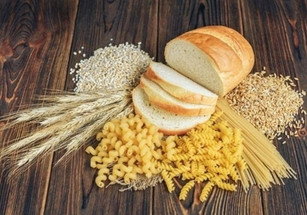Posted by Chrom Tech on 15th Oct 2025
What Column Should I Use for Carbohydrate Analysis?
Why Carbohydrate Analysis Matters
In food science and analytical chemistry, carbohydrate analysis plays a vital role in ensuring the quality, taste, and consistency of food products. High-Performance Liquid Chromatography (HPLC) enables precise quantification of sugars and polysaccharides in complex samples. Selecting the right HPLC column is essential to achieve accurate, reproducible results. At Chrom Tech, we provide a full range of chromatography solutions and help you identify the most suitable column for your carbohydrate analysis workflow.
Choosing the Best Columns for Carbohydrate Analysis
When analyzing carbohydrates, ligand exchange chromatography is one of the most effective separation techniques. This method allows for the use of a simple water eluent while achieving excellent selectivity for carbohydrates. In ligand exchange columns, positively charged metal-loaded groups interact with the negatively charged hydroxyl groups of carbohydrates, enabling separation based on molecular structure and size.
To ensure consistency across analyses, we recommend Concise Separations carbohydrate analysis columns. These columns deliver uniform performance from batch to batch, ensuring reliable data for quantitative and qualitative sugar profiling.
Concise Separations has developed an extensive line of carbohydrate columns by combining multiple chromatographic mechanisms, including ligand exchange (metal interaction), size exclusion, partitioning, and polymer cross-linking. This results in versatile columns suitable for analyzing mono-, di-, tri-, and oligosaccharides with exceptional reproducibility.
- Optimized cross-linkages enhance separation of sugars of varying molecular sizes
- Multiple metal ligand options available for complex sugar matrices
- Metal moieties include Ca2+, Na+, K+, Pb2+, and mixed-mode configurations
These columns are fully compatible with Pulsed Amperometric Detection (PAD)—the preferred mode for electrochemical detection of carbohydrates. For personalized recommendations, contact our Chrom Tech technical team to discuss your specific assay requirements.
How to Extend Your Column Lifetime
Column longevity depends heavily on proper handling and operating conditions. Fortunately, Concise Separations polymeric columns are known for their excellent chemical stability and durability when maintained correctly. Follow these best practices to maximize performance and extend your column’s service life:
- Use pure water (minimum 18 MΩ) as the eluent to prevent contamination and extend column life.
- Incorporate in-line filters and guard columns to protect the analytical column from particulates and debris.
- Maintain the system pressure below the manufacturer’s maximum recommended limit to avoid damage to polymeric gels.
- Ensure the column reaches its operating temperature (up to 95 °C) before starting the flow to stabilize pressure and maintain consistent separation.
By following these guidelines, you’ll achieve longer column life, more consistent chromatographic performance, and more reliable carbohydrate quantitation results.
Frequently Asked Questions About Carbohydrate Analysis
What is the best HPLC column for carbohydrate analysis?
Ligand exchange columns, such as the Concise Separations carbohydrate analysis columns, are ideal due to their compatibility with simple water eluents and high reproducibility for mono-, di-, and oligosaccharides.
How can I prevent premature column failure?
Filter all samples with a syringe filter and use guard columns or inline filters to protect the analytical column. Also, maintain optimal temperature and pressure conditions.
What detector works best for carbohydrates?
Pulsed Amperometric Detection (PAD) is most commonly used for carbohydrate analysis due to its sensitivity and selectivity for electroactive sugar compounds.

